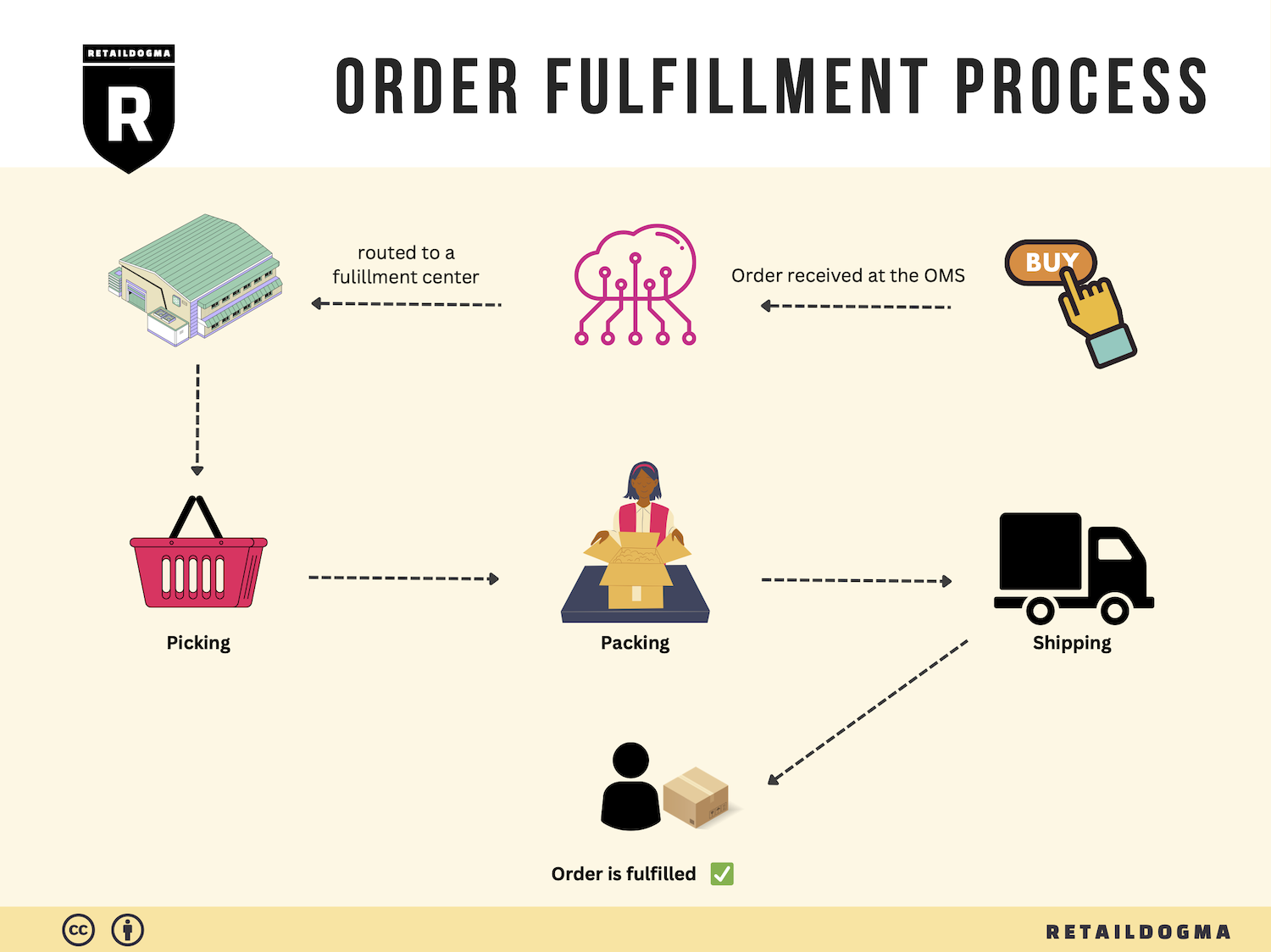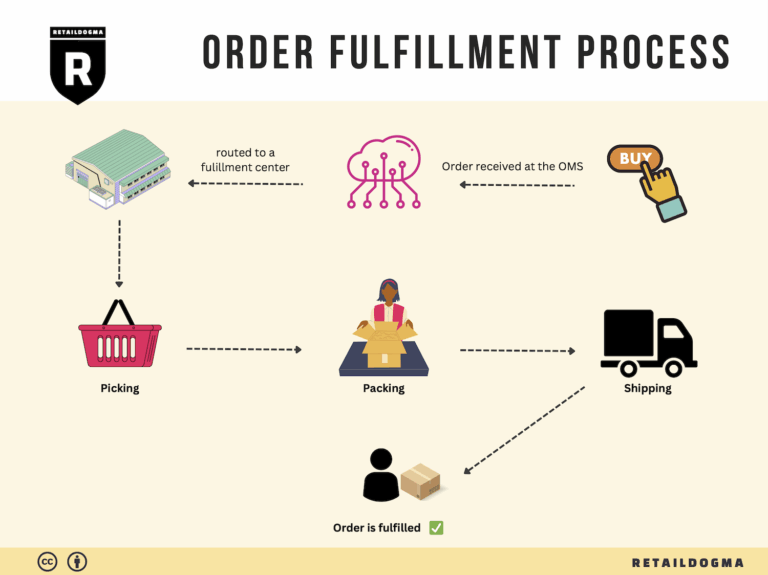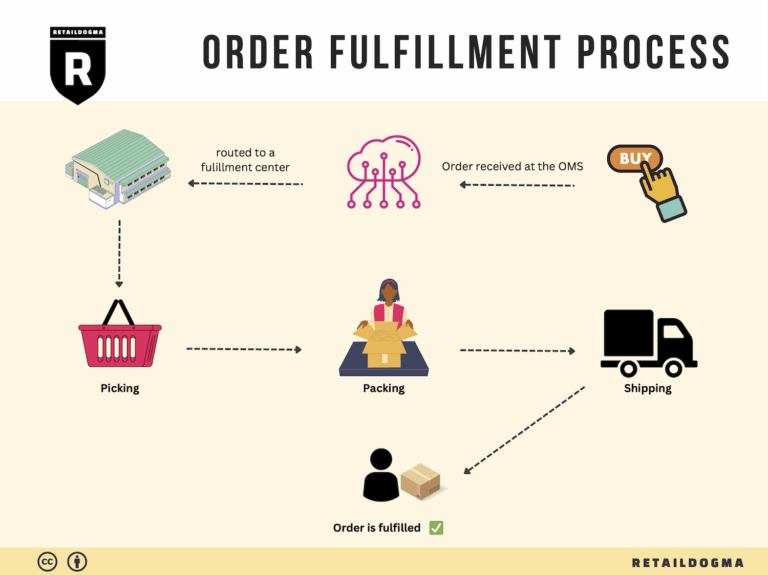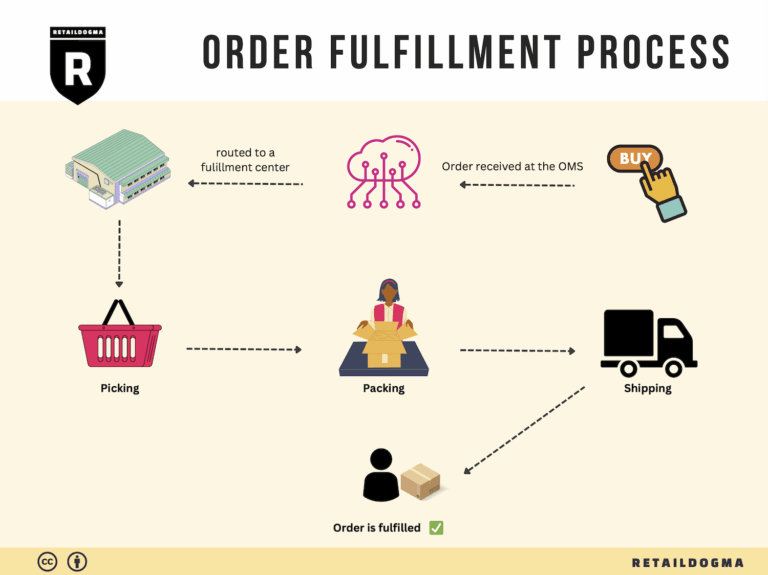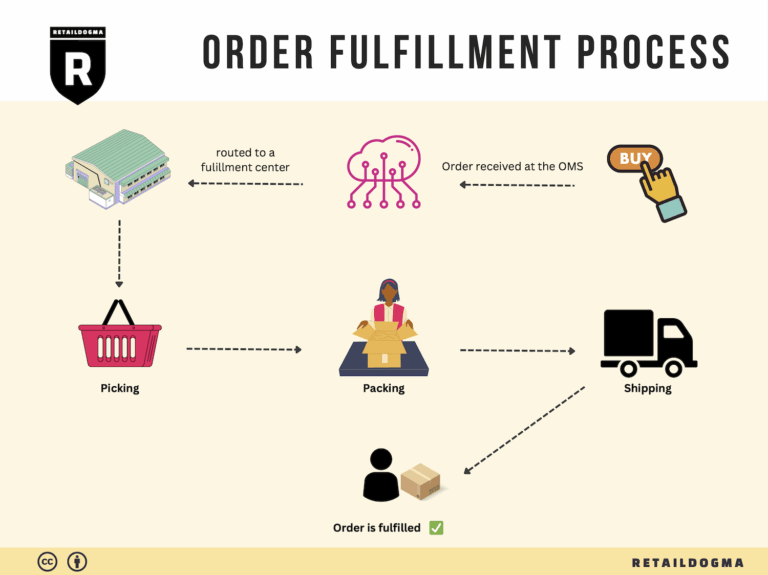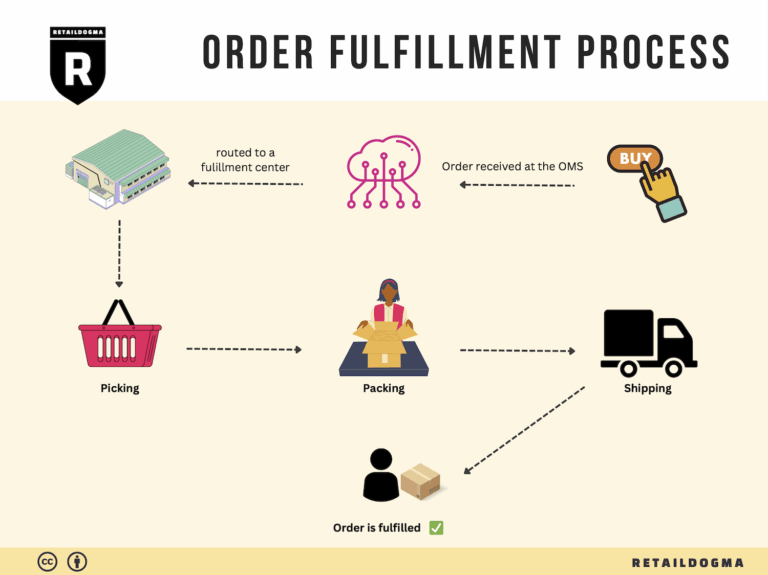How Order Fulfillment Works: A Step-by-Step Guide for Businesses
What is E-commerce Fulfillment? An Introduction for Growing Businesses
Understanding E-commerce Fulfillment
As a growing online business, one of the most daunting challenges you may face is managing the packing and shipping of orders. The excitement of a sale can quickly turn into stress when you realize that fulfilling those orders requires time, resources, and meticulous attention to detail. This is where e-commerce fulfillment comes into play—a critical component of your operations that can either streamline your processes or bog you down in logistics.
Simply put, e-commerce fulfillment is the process of getting a product from your inventory to the hands of your customer. This encompasses everything from receiving orders and picking items from your warehouse to packing them securely and shipping them out. For many businesses, especially those experiencing growth, handling fulfillment in-house can become overwhelming, leading to delays, errors, and ultimately, dissatisfied customers.
In this guide, we will demystify e-commerce fulfillment by exploring various models, including Third-Party Logistics (3PL) and Fulfillment by Amazon (FBA). Each model has its unique advantages and challenges, and understanding these can help you decide which is best for your business.
We’ll delve into the core services that fulfillment partners typically offer, such as inventory management, order processing, packaging, and shipping. Knowing what to expect from a fulfillment partner is crucial for ensuring that your logistics align with your business goals and customer expectations.
Choosing the right fulfillment partner is vital for the success of your e-commerce operations. We will provide practical tips on how to evaluate potential partners based on their capabilities, technology, and customer service. Additionally, we will discuss pricing structures to help you understand the cost implications of outsourcing your fulfillment needs.
The ultimate goal of this guide is to empower you with the knowledge necessary to make informed decisions about your logistics strategy. By choosing the right fulfillment model and partner, you can enhance efficiency, improve customer satisfaction, and allow your business to scale without the logistical headaches. Let’s dive into the world of e-commerce fulfillment and unlock the potential for streamlined operations and growth.
What You’ll Learn In This Guide
- What is E-commerce Fulfillment? An Introduction for Growing Businesses
- The Order Fulfillment Process: From ‘Buy’ Button to Customer’s Door
- Comparing Fulfillment Models: In-House vs. 3PL vs. Dropshipping
- A Deep Dive into Amazon FBA: Pros, Cons, and Who It’s For
- Core Services Offered by Fulfillment Centers
- How to Choose a Fulfillment Partner: A 6-Point Checklist
- Understanding Fulfillment Pricing: A Breakdown of Common Fees
- Frequently Asked Questions (FAQs) about Fulfillment
- Conclusion: Is Outsourcing Fulfillment the Right Move for Your Business?
- Important Disclaimer
The Order Fulfillment Process: From ‘Buy’ Button to Customer’s Door
1. Receiving Inventory
The order fulfillment process begins with receiving inventory at the fulfillment center. This step involves the careful acceptance of goods from suppliers and manufacturers. During this phase, staff inspect the delivered products for quality and quantity, ensuring they match the purchase orders. This is where the concept of Stock Keeping Units (SKUs) comes into play, as each product is assigned a unique SKU for tracking.
Why is this important? Proper inventory reception is crucial for maintaining accurate stock levels and avoiding discrepancies that can lead to stockouts or overstocking. Efficient receiving processes not only streamline subsequent operations but also set the foundation for effective inventory management. In the context of Amazon Fulfillment Center BNA5, this initial step helps maintain high standards of accuracy and reliability, which are essential for meeting customer expectations.
2. Warehouse Storage
Once the inventory has been received and checked, the next step is warehouse storage. Products are organized within the fulfillment center, typically using a systematic approach that enhances retrieval efficiency. Items are stored based on various factors, including size, weight, and SKU categorization. The use of bin locations or shelving systems facilitates easy access and systematic retrieval.
The importance of effective warehouse storage cannot be overstated. A well-organized warehouse minimizes the time spent locating items during the picking process, thereby reducing order lead times. For e-commerce businesses, this translates to faster delivery to customers, which is a critical factor in maintaining competitiveness in the online marketplace. At BNA5, advanced technology aids in the optimization of storage layouts and inventory tracking, ensuring that products are stored in a manner that maximizes space and efficiency.
3. Order Picking
The third step in the fulfillment process is order picking, where warehouse staff retrieve the specific items needed to fulfill customer orders. This step often utilizes pick lists, which are generated based on incoming orders. The pick list details the items and their respective locations in the warehouse, guiding employees through the retrieval process.

Effective order picking is vital as it directly impacts fulfillment speed and accuracy. The faster and more accurately orders are picked, the quicker they can be packed and shipped. Techniques such as batch picking (where multiple orders are picked simultaneously) or zone picking (where pickers are assigned specific areas of the warehouse) can enhance efficiency. Amazon Fulfillment Center BNA5 employs advanced picking technologies, including mobile devices and barcode scanners, to ensure that orders are picked accurately and promptly.
4. Order Packing
After items are picked, they move to the order packing stage. In this phase, products are carefully packed for shipment. This involves selecting appropriate packaging materials, labeling, and ensuring that items are secure to prevent damage during transit. Packing slips are often included to provide customers with details about their order.
The significance of effective packing cannot be overlooked. Proper packing ensures that products reach customers in pristine condition, enhancing customer satisfaction and reducing return rates. Additionally, efficient packing processes help optimize shipping costs by minimizing package size and weight. At BNA5, the packing area is designed for speed and efficiency, utilizing automated systems to streamline the packing process while maintaining quality control.
5. Shipping & Delivery
The final step in the order fulfillment process is shipping and delivery. Once packed, orders are labeled and prepared for shipment. This involves selecting the best carrier and shipping method based on factors such as cost, delivery time, and customer preferences. Tracking information is generated and provided to customers, allowing them to monitor their order status.
Shipping and delivery are crucial as they represent the last touchpoint with the customer. Timely and accurate delivery is essential for maintaining customer trust and satisfaction. Companies that can promise and deliver fast shipping options, such as those offered by Amazon Fulfillment Center BNA5, often see higher customer loyalty and repeat business. Additionally, leveraging technology for real-time tracking and updates enhances the overall customer experience, making it a vital component of the fulfillment process.
By understanding and optimizing each of these steps, e-commerce businesses can significantly improve their order fulfillment processes, leading to enhanced customer satisfaction and increased operational efficiency.
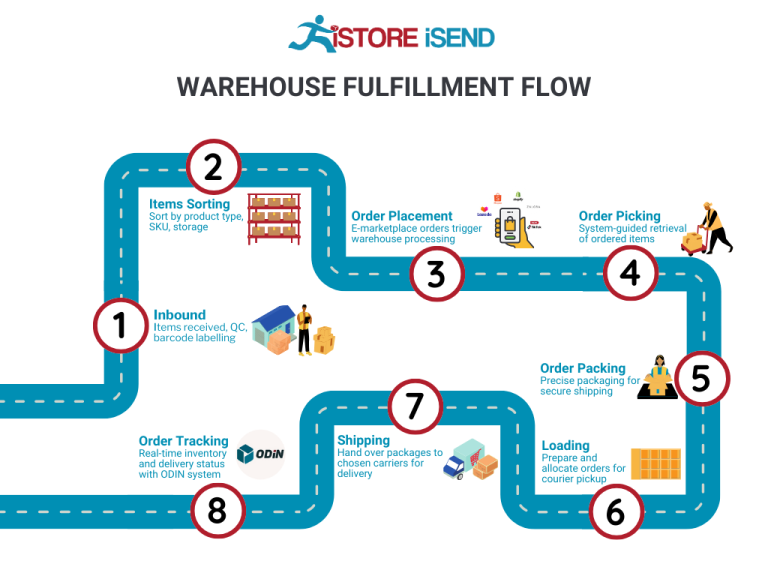
Comparing Fulfillment Models: In-House vs. 3PL vs. Dropshipping
Fulfillment Model Comparison Table
| Model | Who Handles Inventory | Best For (Business Stage) | Key Advantage | Key Disadvantage |
|---|---|---|---|---|
| In-House Fulfillment | The business itself | Established or scaling businesses | Full control over inventory and processes | High overhead costs and resource-intensive |
| Third-Party Logistics (3PL) | A third-party service provider | Startups to mid-sized businesses | Scalability and reduced operational burden | Less control over inventory and fulfillment speed |
| Dropshipping | Suppliers or manufacturers | New or low-capital businesses | Low upfront investment and no inventory risk | Lower profit margins and longer shipping times |
In-House Fulfillment
In-house fulfillment refers to the process where a business manages its entire inventory and order fulfillment operations internally. This model is typically adopted by established companies that have the necessary resources, infrastructure, and workforce to handle logistics efficiently. One of the primary advantages of in-house fulfillment is the complete control it offers over inventory management, order processing, and customer service. Businesses can implement personalized packaging, optimize shipping routes, and quickly adapt to changes in demand or product offerings.
However, managing in-house fulfillment comes with significant drawbacks. The initial setup can be costly, requiring investments in warehousing, technology, and labor. Additionally, as order volumes increase, businesses may find it challenging to maintain efficiency without further investment in infrastructure or staff. This model also poses scalability issues; businesses may struggle to keep pace with rapid growth or fluctuations in demand, leading to potential delays in order processing and fulfillment.
Third-Party Logistics (3PL)
Third-party logistics (3PL) is a model where businesses outsource their warehousing and fulfillment operations to specialized service providers. This approach is ideal for startups and mid-sized companies looking to scale without the heavy burden of managing logistics. 3PL providers offer a range of services, including inventory storage, order processing, shipping, and returns management. They leverage economies of scale, allowing businesses to benefit from reduced shipping rates and improved delivery times.
One of the key advantages of using a 3PL is the ability to scale operations quickly. As businesses grow, 3PLs can adjust their services to meet increasing order volumes without requiring additional capital investment from the business owner. However, the downside is that businesses may have less control over their inventory and fulfillment processes. Relying on a third party can lead to potential miscommunications, delays, or inconsistencies in service quality. Businesses need to choose their 3PL partner carefully to ensure alignment with their operational goals and customer service standards.
Dropshipping
Dropshipping is a fulfillment model where a retailer does not hold inventory but instead transfers customer orders directly to a supplier, who then ships the products directly to the customer. This model is particularly appealing for new businesses or entrepreneurs with limited capital, as it requires minimal upfront investment and eliminates the need for warehousing. Retailers can offer a wide variety of products without the risks associated with holding unsold inventory.
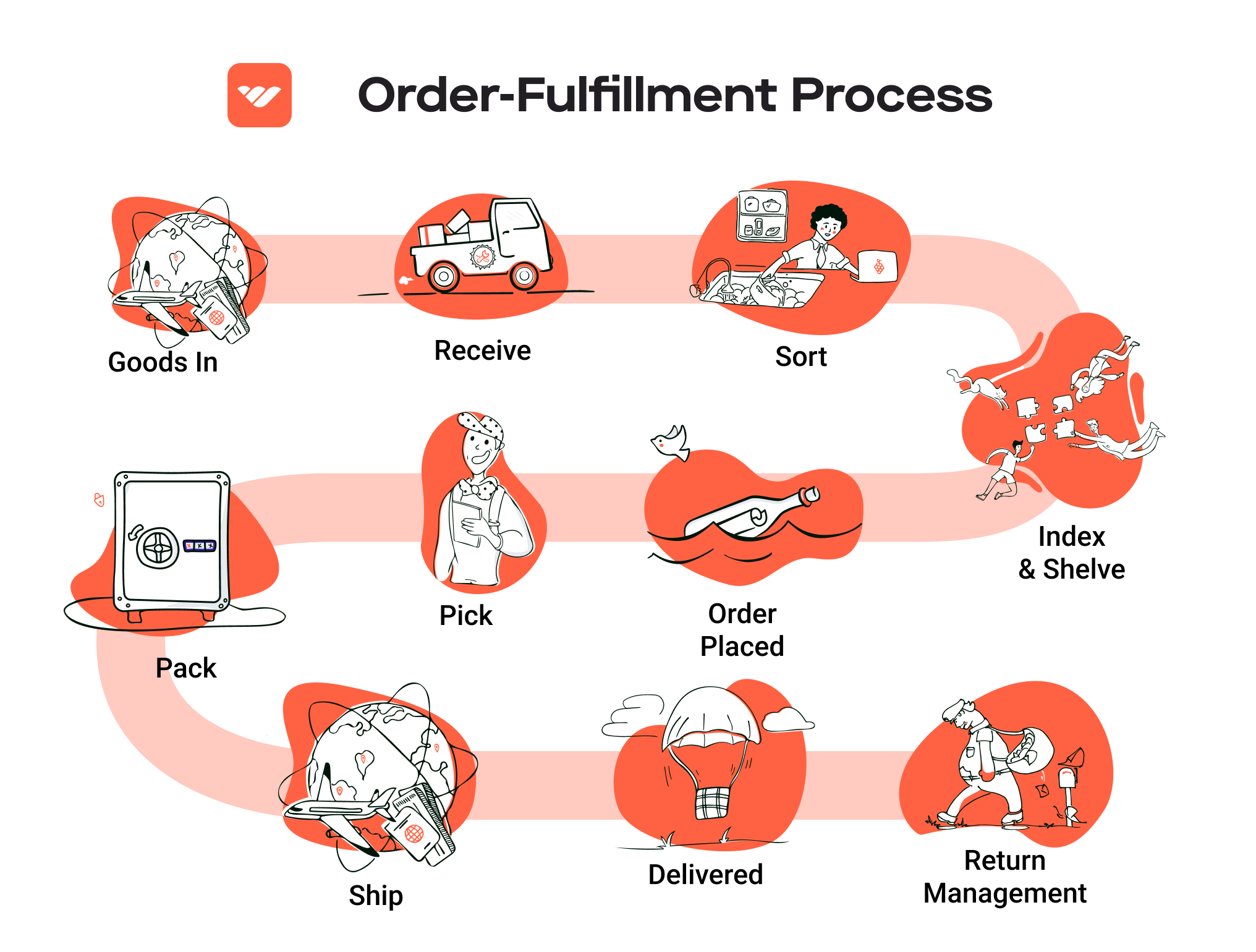
The primary advantage of dropshipping is the low barrier to entry, allowing entrepreneurs to start their e-commerce businesses with minimal financial risk. It also enables flexibility in product offerings and the ability to quickly pivot based on market trends. However, dropshipping comes with its challenges, notably lower profit margins due to reliance on suppliers and potential delays in shipping times, which can impact customer satisfaction. Additionally, retailers have less control over the quality of products and the fulfillment process, making it crucial to partner with reliable suppliers to maintain brand reputation.
Conclusion
When choosing a fulfillment model, businesses must consider their current stage, financial resources, and long-term goals. In-house fulfillment offers control and customization but at a high cost. 3PL provides flexibility and scalability, making it a strong choice for growing businesses. Dropshipping presents an easy entry point for new entrepreneurs, though it comes with challenges in profit margins and fulfillment speed. Each model has its distinct advantages and disadvantages, and the right choice will depend on the specific needs and strategic objectives of the business.
A Deep Dive into Amazon FBA: Pros, Cons, and Who It’s For
Understanding Fulfillment by Amazon (FBA)
Fulfillment by Amazon (FBA) is a service provided by Amazon that enables e-commerce businesses to store their products in Amazon’s fulfillment centers. This service allows sellers to leverage Amazon’s vast logistics network, including storage, packing, shipping, and customer service, thereby simplifying the e-commerce process and enhancing operational efficiency.
When a customer places an order for a product listed through FBA, Amazon takes care of the entire fulfillment process. This includes picking the item from the warehouse, packing it, and shipping it directly to the customer. Additionally, Amazon handles customer inquiries and returns, allowing sellers to focus on other aspects of their business.
How FBA Works
-
Sign Up for FBA: Sellers must create an Amazon Seller account and enroll in the FBA program.
-
Prepare Products: Products need to be prepared according to Amazon’s guidelines, including labeling and packaging requirements.
-
Ship Products to Amazon: Sellers send their inventory to Amazon’s fulfillment centers. The Amazon Fulfillment Center-BNA5 in Nashville, TN, is one of many facilities that manage a diverse range of products and shipping needs.
-
Product Listing: Once the products are received, sellers can list them on Amazon with the FBA designation, making them eligible for Prime shipping.
-
Order Fulfillment: When customers place orders, Amazon picks, packs, and ships the products on behalf of the seller.
-
Customer Service and Returns: Amazon provides customer service for FBA products, including handling returns, which is a significant advantage for sellers.
Pros of Using FBA
-
Prime Eligibility: FBA products are automatically eligible for Amazon Prime, which attracts a large customer base looking for fast shipping options. This can lead to increased sales as Prime members often prefer products that offer free two-day shipping.
-
Customer Trust: Leveraging Amazon’s trusted brand can enhance customer confidence in your products. When customers see that a product is fulfilled by Amazon, they are more likely to make a purchase due to the reliability associated with Amazon’s fulfillment services.
-
Multi-Channel Fulfillment: FBA allows sellers to fulfill orders not only from Amazon but also from their own websites or other platforms. This capability streamlines operations and helps maintain inventory consistency across different sales channels.
-
Scalability: FBA provides a scalable solution for growing businesses. As order volumes increase, sellers can take advantage of Amazon’s infrastructure without needing to invest heavily in their own logistics.
-
Time Savings: By outsourcing fulfillment to Amazon, sellers can focus on core business activities such as product development and marketing, rather than logistics and customer service.
Cons of Using FBA
-
High Fees: FBA comes with various fees, including storage fees for holding inventory in Amazon’s warehouses and fulfillment fees for picking, packing, and shipping products. These costs can add up and significantly impact profit margins, particularly for lower-priced items.
-
Strict Inventory Rules: Amazon has stringent rules regarding inventory management, including limits on the amount of stock that can be sent to fulfillment centers. This can be challenging for sellers who experience rapid sales fluctuations.
-
Commingling Risks: FBA products may be commingled with other sellers’ inventory. This means that if a product is returned and deemed unsellable, it can affect the seller’s inventory, potentially leading to lost sales and negative customer reviews.
-
Loss of Control: By using FBA, sellers relinquish control over their fulfillment process. This can lead to challenges in managing customer service and product quality, which are essential for maintaining brand reputation.
-
Dependency on Amazon: Relying on Amazon for fulfillment can make businesses vulnerable to changes in Amazon’s policies, fees, and algorithms, which can impact visibility and sales.
Who is FBA Best For?
FBA is particularly well-suited for:
-
Small to Medium-Sized Businesses: Sellers who may not have the infrastructure or resources to manage their own fulfillment can benefit significantly from FBA’s scalability and convenience.
-
E-commerce Entrepreneurs: New entrepreneurs looking to enter the e-commerce space can leverage FBA to simplify logistics and focus on growing their brand without the burden of managing inventory and shipping.
-
Businesses with Seasonal Demand: Companies that experience fluctuations in order volume can utilize FBA to manage inventory efficiently without the need for extensive warehousing solutions.
-
Brands with Limited Fulfillment Experience: Businesses that lack expertise in logistics and fulfillment can benefit from Amazon’s well-established systems, ensuring that orders are processed efficiently and accurately.
-
Sellers Seeking to Expand Reach: For businesses looking to increase their exposure on Amazon, FBA provides the tools necessary to tap into the vast customer base that prefers Prime-eligible products.
In conclusion, Fulfillment by Amazon offers a powerful solution for e-commerce businesses aiming to streamline their logistics operations and enhance customer satisfaction. While it comes with its own set of challenges, the benefits often outweigh the drawbacks, making it an attractive option for many sellers looking to scale their operations in the competitive online marketplace.
Core Services Offered by Fulfillment Centers
Inventory Management & Warehousing
Inventory management and warehousing are foundational services provided by fulfillment centers. This involves the systematic tracking of inventory levels, orders, sales, and deliveries. Fulfillment centers utilize advanced inventory management systems that integrate with e-commerce platforms, allowing business owners to monitor stock levels in real-time and make informed decisions about replenishment.
Benefits to E-commerce Businesses:
1. Reduced Overhead Costs: By outsourcing warehousing to fulfillment centers, e-commerce businesses can save on costs associated with maintaining their own storage facilities, such as rent, utilities, and staff.
2. Scalability: As your business grows, fulfillment centers can easily accommodate fluctuations in inventory needs without the hassle of relocating or expanding your own facilities.
3. Improved Accuracy: Advanced inventory tracking systems minimize human error, leading to accurate stock levels and preventing overstocking or stockouts, which can significantly impact sales and customer satisfaction.
Pick and Pack Services
Pick and pack services are crucial for the efficient order fulfillment process. This service involves selecting the ordered items from inventory (picking) and then packing them appropriately for shipment (packing). Fulfillment centers often employ automated systems and trained staff to ensure that this process is completed quickly and accurately.
Benefits to E-commerce Businesses:
1. Speed and Efficiency: Fulfillment centers are designed to process orders rapidly, which is essential for meeting customer expectations in today’s fast-paced e-commerce environment.
2. Professional Packing: Utilizing industry best practices for packing reduces the likelihood of damage during transit, ensuring that products arrive in pristine condition, thereby enhancing customer satisfaction.
3. Customizable Options: Many fulfillment centers offer customizable packing solutions, including branded packaging, which can elevate the unboxing experience and strengthen brand identity.
Kitting and Assembly
Kitting and assembly services involve combining multiple products into a single package or preparing a product for sale by assembling various components. This service is particularly beneficial for businesses that sell products that require assembly or bundling, such as subscription boxes or promotional kits.
Benefits to E-commerce Businesses:
1. Enhanced Product Offering: Kitting allows businesses to create unique product bundles or kits that can attract customers looking for convenience, thereby increasing sales opportunities.
2. Time Savings: By outsourcing kitting and assembly, businesses can focus on their core operations—such as marketing and customer service—while ensuring that products are packaged and ready for sale without dedicating internal resources.
3. Cost Efficiency: Fulfillment centers often have streamlined processes for kitting, which can reduce labor costs and improve turnaround times compared to handling these tasks in-house.
Returns Management (Reverse Logistics)
Returns management, or reverse logistics, is a critical service that involves the process of handling returned goods. Fulfillment centers manage the return process, from providing customers with return labels to inspecting, restocking, or disposing of returned items. This service is essential for maintaining customer satisfaction and managing inventory effectively.
Benefits to E-commerce Businesses:
1. Streamlined Process: Fulfillment centers have established systems for processing returns efficiently, which can enhance customer trust and satisfaction by making returns hassle-free.
2. Data Insights: By analyzing return data, businesses can gain insights into customer behavior and product performance, enabling them to make informed decisions about inventory and product offerings.
3. Cost Recovery: Proper returns management helps recover costs associated with returned items, whether through restocking, refurbishing, or recycling, thereby minimizing losses from returns.
Conclusion
Utilizing a fulfillment center like Amazon Fulfillment Center-BNA5 can significantly enhance the operational efficiency of e-commerce businesses. By leveraging core services such as inventory management, pick and pack services, kitting and assembly, and returns management, businesses can streamline their logistics processes, reduce costs, and ultimately improve customer satisfaction. This comprehensive approach to fulfillment not only supports growth but also positions businesses to compete effectively in the ever-evolving e-commerce landscape.
How to Choose a Fulfillment Partner: A 6-Point Checklist
Location & Warehouse Network
Importance: The geographical location of your fulfillment partner’s warehouses significantly impacts shipping times and costs. A strategically located partner can facilitate faster deliveries and lower shipping expenses.
Questions to Ask:
– Where are your fulfillment centers located? How do these locations align with my target market?
– What is the average shipping time to key areas where I sell?
– Do you have a network of warehouses that can provide nationwide or regional coverage?
Technology & Integrations
Importance: Advanced technology and seamless integrations with e-commerce platforms are essential for efficient order processing, inventory management, and real-time tracking. A partner with robust technology can enhance operational efficiency and customer satisfaction.
Questions to Ask:
– What technology do you use for inventory management and order processing?
– Can your system integrate with my current e-commerce platforms (like Shopify, Amazon, etc.) and accounting software?
– How do you ensure data security and reliability in your systems?
Specializations (e.g., Cold Storage, Oversized Items)
Importance: If your products require specific handling (like temperature control or oversized items), partnering with a fulfillment center that specializes in those areas can prevent damage and ensure compliance with regulations.
Questions to Ask:
– Do you have specialized services for my type of products (e.g., cold storage, fragile items)?
– What are your capabilities for handling oversized or heavy items?
– How do you ensure compliance with industry regulations for specialized products?
Scalability & Capacity
Importance: As your business grows, your fulfillment partner must be able to scale operations to meet increasing demand. A partner with sufficient capacity can accommodate your needs without service interruptions.
Questions to Ask:
– What is your current capacity, and how quickly can you scale operations if my order volume increases?
– Do you have contingency plans in place for peak seasons or unexpected demand spikes?
– How do you manage inventory during periods of growth or contraction?
Pricing and Contracts
Importance: Understanding the pricing structure and contract terms is crucial for maintaining profitability. Transparent pricing and flexible contract options can prevent unexpected costs and allow for easier budgeting.
Questions to Ask:
– What is included in your pricing model? Are there additional fees for services like storage, returns, or packaging?
– Can you provide a detailed breakdown of your pricing structure?
– What are the terms of your contracts? Is there flexibility to adjust terms as my business evolves?
Customer Support & Reviews
Importance: Excellent customer support can make a significant difference in resolving issues quickly and maintaining smooth operations. Additionally, researching reviews can provide insights into the partner’s reliability and service quality.
Questions to Ask:
– What customer support options do you provide (e.g., phone, email, chat)?
– How quickly do you typically respond to inquiries or issues?
– Can you provide references or case studies from similar businesses? What do your current clients say about your service?
Conclusion
Choosing the right fulfillment partner is a critical decision that can influence your e-commerce business’s growth and efficiency. By using this checklist, you can systematically evaluate potential partners to find one that aligns with your operational needs and goals. Remember to prioritize open communication and transparency throughout the selection process to build a successful long-term partnership.
Understanding Fulfillment Pricing: A Breakdown of Common Fees
Initial Setup Fees
When partnering with a fulfillment center, businesses often encounter initial setup fees. These charges can cover a variety of services, including account creation, integration with your e-commerce platform, and the initial onboarding process. The setup fee is typically a one-time cost that ensures your operations are tailored to your business needs.
The calculation of initial setup fees can vary significantly from one provider to another. Some may offer a flat fee, while others might charge based on the complexity of your needs, such as the number of products you offer or the specific integrations required. To keep costs manageable, it’s advisable to clearly define your operational requirements upfront and ask for a detailed breakdown of these fees.
Receiving Fees
Receiving fees are charged when inventory arrives at the fulfillment center. These fees cover the labor and equipment needed to unload, inspect, and store incoming products. Generally, receiving fees can be calculated on a per-unit basis or as a flat fee per shipment, depending on the fulfillment center’s pricing structure.
The fee might also vary based on the complexity of the receiving process. For example, if your products require special handling or inspection, you might incur additional charges. To minimize receiving fees, ensure that your shipments are well-organized and labeled clearly, making it easier for the fulfillment center to process them efficiently.
Storage Fees (per pallet/bin)
Storage fees apply to the space your inventory occupies within the fulfillment center. These fees are typically calculated on a monthly basis and can be charged per pallet or bin. The cost may fluctuate based on the size and weight of your products, as well as the overall demand for warehouse space.
Fulfillment centers often have tiered pricing models, where the first few pallets or bins are priced at a lower rate, while additional space incurs higher costs. It’s crucial to monitor your inventory turnover to avoid excessive storage fees. Implementing just-in-time inventory practices can help you optimize storage costs by ensuring that you only store what you need, when you need it.
Pick & Pack Fees (per item/order)
Pick and pack fees are associated with the process of selecting products from the warehouse (picking) and preparing them for shipment (packing). These fees can be calculated on a per-item basis, meaning the more items in an order, the higher the fee. Some fulfillment centers may also charge a flat fee per order, regardless of the number of items.
Factors influencing pick and pack fees include the complexity of the order (e.g., multiple SKUs versus single-item orders) and any special packing requirements, such as gift wrapping or fragile item handling. To reduce these fees, consider optimizing your product offerings to streamline order fulfillment, and consolidate orders when possible.
Shipping Fees
Shipping fees are the costs incurred when your products are dispatched to customers. These fees can vary based on several factors, including package dimensions, weight, destination, and shipping speed. Fulfillment centers often have partnerships with various carriers, allowing them to negotiate rates that can be more advantageous than what individual businesses might secure.
Shipping fees can be calculated using a variety of models, including flat-rate shipping, weight-based pricing, or zone-based pricing, depending on the carrier’s pricing structure. To manage shipping costs effectively, it’s essential to understand your shipping options and leverage any available discounts or incentives from your fulfillment partner.
Tips for Getting an Accurate Quote
-
Provide Detailed Information: When requesting quotes, be as detailed as possible about your product dimensions, weight, and expected order volume. This information will help fulfillment centers provide more accurate pricing.
-
Ask for Transparency: Request a breakdown of all potential fees involved in the fulfillment process. Understanding each component of the pricing structure will help you make informed decisions.
-
Consider Volume Discounts: Inquire about pricing adjustments based on higher volumes or longer-term contracts. Many fulfillment centers offer reduced rates for businesses with consistent, high order volumes.
-
Evaluate Additional Services: If you require additional services such as kitting, labeling, or returns processing, be sure to factor these into your overall cost assessment.
-
Negotiate Terms: Don’t hesitate to negotiate with potential fulfillment partners. Many are willing to adjust fees or offer incentives to win your business, especially if you can commit to a long-term partnership.
By understanding these common fulfillment pricing models and following these tips, e-commerce businesses can effectively navigate the complexities of fulfillment costs and optimize their logistics operations for growth.
Frequently Asked Questions (FAQs) about Fulfillment
1. What is the Amazon Fulfillment Center-BNA5?
The Amazon Fulfillment Center-BNA5, located at 50 Airport Dr, Nashville, TN, is a large-scale facility dedicated to storing, packing, and shipping a wide array of products for Amazon. It plays a critical role in ensuring efficient order processing and timely delivery to customers throughout the region and beyond.
2. How does the fulfillment process work at BNA5?
At BNA5, the fulfillment process involves several key steps:
1. Receiving Products: Inventory is received and logged into the system.
2. Storage: Products are stored in designated areas within the facility.
3. Order Processing: When a customer places an order, the system identifies the location of the product.
4. Picking and Packing: Staff or automated systems retrieve the items, pack them securely, and prepare them for shipment.
5. Shipping: Packages are dispatched using various carriers to ensure timely delivery.
3. What is the difference between a warehouse and a fulfillment center?
A warehouse primarily serves as a storage space for inventory, focusing on bulk storage and inventory management. In contrast, a fulfillment center is designed to handle the entire order fulfillment process, including storage, picking, packing, and shipping directly to customers. Fulfillment centers prioritize speed and efficiency to meet the demands of e-commerce.
4. What is a 3PL?
A 3PL, or Third-Party Logistics provider, is a company that offers outsourced logistics services, including warehousing, fulfillment, and transportation. Businesses often partner with 3PLs to enhance their supply chain efficiency, reduce costs, and scale operations without the overhead of managing their own logistics.
5. How much do fulfillment services cost?
The cost of fulfillment services can vary widely based on several factors, including:
– Storage Fees: Charged per cubic foot or pallet.
– Order Processing Fees: Based on the number of orders or items picked and packed.
– Shipping Costs: Determined by package weight, dimensions, and destination.
– Additional Services: Such as returns processing or special packaging.
It’s essential for businesses to evaluate their specific needs and request quotes from multiple providers to find the best pricing structure.
6. What technologies are used at the Amazon Fulfillment Center-BNA5?
BNA5 utilizes state-of-the-art technology to streamline operations, including:
– Automated Picking Systems: To increase efficiency in order fulfillment.
– Inventory Management Software: To track stock levels and manage inventory in real-time.
– Robotics: For sorting and moving products within the facility.
– Data Analytics: To optimize logistics processes and enhance customer experience.
7. How can I ensure my products are ready for fulfillment at BNA5?
To prepare your products for fulfillment at BNA5, ensure they are:
– Properly Packaged: Use sturdy boxes and appropriate padding to protect items.
– Labeled Correctly: Follow Amazon’s labeling guidelines to avoid delays in processing.
– Compliant with Regulations: Ensure products meet any necessary safety or regulatory standards.
8. What shipping options are available through BNA5?
Amazon Fulfillment Center-BNA5 offers various shipping options, including:
– Standard Shipping: Typically takes 3-5 business days.
– Two-Day Shipping: Available for Prime members and eligible products.
– Same-Day Delivery: Offered in select areas for eligible items.
These options can significantly enhance customer satisfaction by providing flexibility in delivery.
9. What support does Amazon provide for businesses using BNA5?
Amazon provides several support resources for businesses utilizing BNA5, including:
– Account Management: Dedicated account managers to assist with operations.
– Training and Onboarding: Resources and support for getting started with fulfillment services.
– Performance Analytics: Tools to track order accuracy, shipping times, and customer feedback.
10. How can I scale my business using the Amazon Fulfillment Center-BNA5?
To effectively scale your business using BNA5, consider the following strategies:
– Leverage Fast Shipping Options: Offer competitive shipping times to attract more customers.
– Optimize Inventory Levels: Use data analytics to maintain optimal stock levels, reducing overstock and stockouts.
– Integrate with Sales Channels: Ensure your sales platforms, such as Amazon, eBay, or your own website, are seamlessly integrated with BNA5 for streamlined order processing.
– Focus on Marketing: Utilize Amazon’s advertising tools to increase visibility and drive traffic to your listings.
By implementing these strategies, you can enhance your operational efficiency and grow your e-commerce business effectively.
Conclusion: Is Outsourcing Fulfillment the Right Move for Your Business?
Evaluating the Benefits of Outsourcing Fulfillment
In the rapidly evolving world of e-commerce, outsourcing fulfillment can be a strategic move that significantly enhances your operational efficiency. By leveraging a fulfillment service, businesses can save valuable time, allowing them to focus on core activities such as product development, marketing, and customer engagement. With the right partner, you gain access to advanced technology and streamlined processes that can drastically reduce order processing times and improve customer satisfaction.
Scalability is another compelling reason to consider outsourcing. As your business grows, so do the complexities of managing inventory, shipping logistics, and customer service. A fulfillment partner can seamlessly scale operations to meet fluctuating demand, ensuring that you are equipped to handle increased order volumes without the need for substantial investments in infrastructure or staffing. This flexibility is crucial for maintaining competitive advantage in a market where speed and reliability are paramount.
Moreover, expertise is a significant advantage when partnering with established fulfillment centers. These providers specialize in logistics and have a wealth of knowledge regarding best practices, compliance, and technology integration. Their experience allows you to benefit from proven strategies and efficiencies that can enhance your overall supply chain performance.
However, the success of outsourcing fulfillment hinges on selecting the right partner. It’s essential to assess potential providers based on their capabilities, technology, and service level agreements to ensure alignment with your business goals.
Take Action Now
Consider conducting a thorough audit of your current shipping and fulfillment processes. Evaluate areas where inefficiencies may exist and determine if partnering with a fulfillment service could be the right next step for your business. By taking proactive measures today, you can position your e-commerce operations for sustainable growth and success in the future.
Important Disclaimer
⚠️ Important Disclaimer
The information in this guide is for educational purposes. Fulfillment services, pricing, and platform features change frequently. Always conduct your own due diligence and consult with providers directly before making business decisions.
